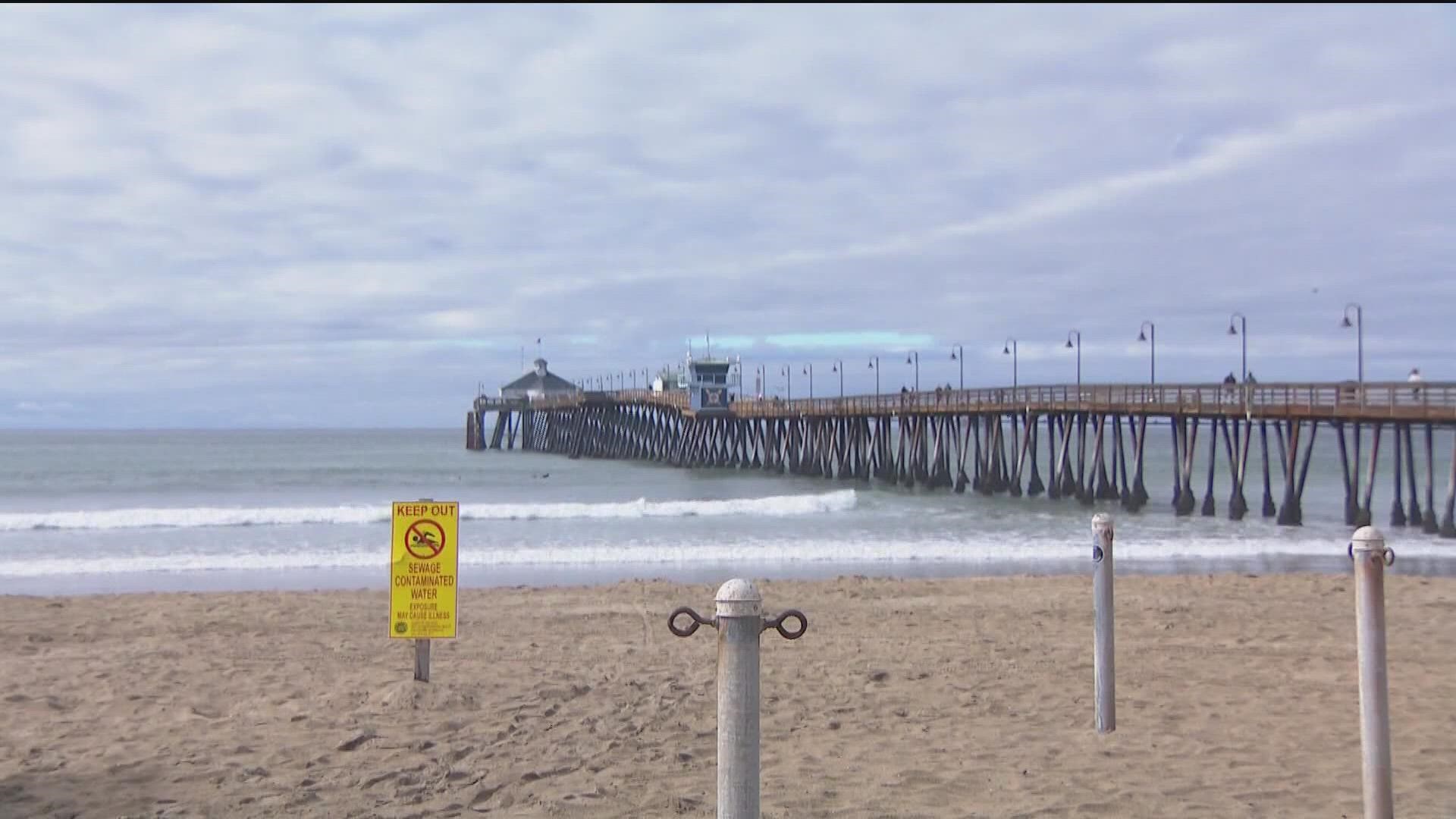SAN DIEGO COUNTY, Calif. — San Diego County officials Wednesday introduced a new water-testing technology they will begin using the very next day to provide same-day public warnings of poor coastal water quality that causes illness.
San Diego leaders say the results will be more accurate and posted within hours instead of the next day, reducing the time the public could be at risk if water is contaminated.
The new cutting edge science is called the DDPCR method. It provides more accurate same-day public warnings of water that causes illness. This will allow the community to know they are entering the water safely without the risk of getting sick. Beach and water contact closures are becoming the norm due to unsafe and unclean water as pollution continues to leak out of Tijuana into the Pacific Ocean.
County Board of Supervisors Vice Chair Nora Vargas, County Public Health Officer Dr. Wilma Wooten and Heather Buonomo, director of the county's department of Environmental Health & Quality are scheduled to speak.
Last month, the agency tasked with overseeing wastewater infrastructure in the Tijuana River Valley mitigated and addressed cross-border water flows, per a settlement regarding millions of gallons of wastewater that poured into the San Diego region from Mexico.
The settlement aims to resolve long-running litigation filed by several agencies and municipalities, which alleged that the U.S. section of the International Boundary and Water Commission allowed polluted water, trash and sediment to flow into the United States over the course of several years, in violation of the Clean Water Act.
The USIBWC was the sole defendant in all lawsuits filed since 2018, while plaintiffs included the cities of San Diego, Imperial Beach and Chula Vista, as well as the Port of San Diego, California San Diego Regional Water Quality Control Board, California State Lands Commission, and Surfrider Foundation.
"This settlement, and the collaborative approach underpinning it, will prevent damage to California's public lands and help us achieve one of our core mandates -- providing public access to California's beautiful beaches and the Pacific Ocean," State Controller and State Lands Commission Chair Betty Yee said.
Per the settlement, the USIBWC has agreed to several terms, including proposing construction of another temporary sediment berm to intercept transboundary flows, expanding public outreach regarding its efforts to divert and remedy wastewater flows, and assessing the feasibility for sediment and trash removal in the Tijuana River Flood Control Channel.
Any violation of the terms means the entities can revive their lawsuits and file new lawsuits for any new alleged violations.
The settlement agreement is pending implementation of the Environmental Protection Agency's plan to commit $300 million in federal funding for projects aimed at reducing the amount of polluted water flowing into the U.S. sections of the Tijuana River Valley.
"This settlement is a major milestone that represents the success our region has made in taking a unified approach to finally put an end to the unacceptable conditions that have allowed for millions of gallons of untreated sewage to pollute our beaches and waterways in the Tijuana River Valley," San Diego Mayor Todd Gloria said. "Our region is committed to continuing to work collaboratively with the federal government to make progress on the priorities outlined in the settlement, including utilizing the $300 million in committed federal funding."
WATCH RELATED: Settlement reached in long-running cross-border sewage litigation (Apr 12, 2022)

